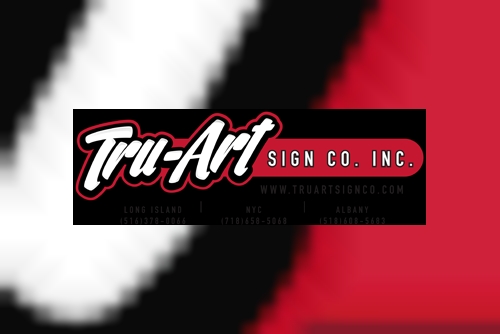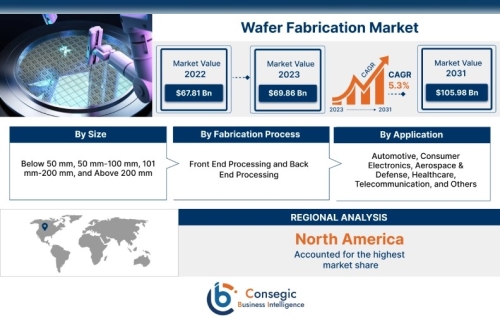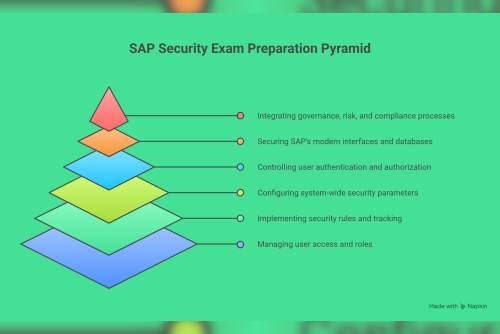Understanding the NYC Building Code and Permit System
What Are Building Violations in NYC?
Let’s get one thing clear: New York City doesn’t play around when it comes to regulations. With one of the most complex building codes in the country, any minor misstep can trigger a violation. But what exactly are these violations?
In a nutshell, building violations in NYC are legal notices issued by city agencies like the Department of Buildings (DOB), Fire Department (FDNY), or Environmental Control Board (ECB) when a property fails to comply with city codes or regulations. These infractions can be as minor as an unpermitted sign or as major as unsafe construction work. Often, violations are triggered during routine inspections, complaints from the public, or while filing for permits.
Some common triggers? Think unapproved construction, missing permits, improper signage, blocked exits, and expired equipment. And here’s the kicker: these violations don’t just sit quietly in the background. They can snowball into major financial and legal headaches if ignored. The worst part? Even new property owners can inherit old violations if they’re not careful.
The complexity of the system, paired with ongoing regulatory changes, makes it critical to stay informed—and more importantly, compliant. That’s where professionals like TruArt Sign Co. come in. They specialize in not just identifying violations but also getting them off your record efficiently.
Why Permits Matter in New York City
You may be tempted to skip the permit process altogether. After all, isn’t it just more paperwork? In reality, permits are your first line of defense against violations.
Permits in NYC are legal documents that authorize construction, alterations, or installations on a property. Without them, even seemingly innocent modifications—like putting up a sign—can lead to hefty fines and a barrage of red tape. The DOB takes unpermitted work seriously. It’s their way of keeping the city safe, functional, and compliant.
A valid permit ensures your project meets zoning laws, safety standards, and environmental codes. More importantly, it gives you legal protection in case something goes wrong. Imagine investing thousands into a project only to be shut down mid-way because you skipped the permit? That’s not just a delay—it’s a disaster.
And if you're overwhelmed, you’re not alone. That’s why TruArt Sign Co. offers end-to-end support—from acquiring initial permits to closing them after the work is done. They help you avoid unnecessary delays and keep your project moving.
Common Types of Building Violations in NYC
DOB Violations
DOB violations are the bread and butter of the NYC regulatory system. They’re issued by the Department of Buildings when a property fails to comply with the NYC Construction Code, Zoning Resolution, or other applicable rules. These can range from failing to file required documentation to carrying out unapproved work.
There are different classes of DOB violations:
Class 1: Immediately hazardousClass 2: Major but not immediately dangerousClass 3: Lesser violationsEach violation type comes with its own set of penalties and correction requirements. A Class 1 violation, for example, may require an immediate fix and could include a stop-work order. Worse yet, failing to address these can lead to liens, court action, or even demolition orders.
TruArt Sign Co. helps by evaluating the type of DOB violation and crafting a tailored correction strategy. They also liaise directly with inspectors and engineers to fast-track the compliance process.
ECB/OATH Summonses
ECB (now known as OATH) summonses are another major source of confusion and frustration. These are typically issued when a property is found in violation of city codes and requires a hearing before an administrative law judge.
Unlike DOB violations, which are mostly technical, OATH summonses can result in severe penalties and are legally binding. You’ll have to appear at a hearing, present your case, and often pay a fine—even if you plan to correct the issue.
Ignoring a summons? Big mistake. That can lead to default judgments, increased fines, and a blemished property record.
TruArt’s role here is crucial. They provide representation, help gather required documentation, and ensure the fastest possible route to dismissal or compliance. Think of them as your personal legal translator for NYC’s complex bureaucratic dialect.
Fire Department Violations
The FDNY is no slouch when it comes to enforcing fire safety codes. They issue violations for issues like:
Blocked exits or stairwellsInadequate signageExpired fire suppression systemsUnapproved storage of hazardous materialsFire code violations are serious. They’re often issued during routine inspections or in response to complaints. And once issued, they need to be corrected quickly—or you’ll face recurring fines and potential shutdowns.
TruArt Sign Co. steps in with targeted solutions—such as ensuring proper signage, correcting spacing and design flaws, and coordinating with FDNY officials for timely resolution. Their fast-track correction plans mean your business doesn’t suffer extended downtime.
The Role of TruArt Sign Co. in Violation Removal NYC
Why Choose TruArt Sign Co.
When it comes to navigating NYC’s byzantine permit and violation system, you want a partner who knows the terrain—and that’s where TruArt Sign Co. shines. With years of hands-on experience, they’ve helped hundreds of property owners and managers tackle everything from minor signage violations to complex zoning issues.
But TruArt isn’t just about solving problems—they prevent them. They work proactively to identify potential compliance risks and guide clients through the permitting process before issues arise. This forward-thinking approach is what sets them apart from typical “fix-it-after-it’s-broken” companies.
Clients choose TruArt because they’re reliable, efficient, and deeply familiar with the NYC building ecosystem. They’ve built solid relationships with city inspectors, plan examiners, and agency staffers—which means they can often get things moving when others hit roadblocks. When time, money, and peace of mind are on the line, TruArt is the clear choice.
Services Offered for Violation Removal
TruArt Sign Co. isn’t a one-size-fits-all operation. Their services are customized to meet the specific needs of every client. Whether you’re dealing with a first-time DOB violation or a stack of OATH summonses, they’ve got you covered.
Here’s a snapshot of what they offer:
Violation Research & Consultation: Digging deep into your property records to identify all open violations.Site Inspections: On-site evaluations to understand the scope and specifics of each issue.Filing and Paperwork: Preparing and submitting all necessary documentation for corrections and permits.Permit Expediting: Fast-tracking DOB filings and approvals.Corrective Work: Coordinating with licensed contractors and engineers for necessary construction or signage work.Sign-Off & Close-Out: Ensuring each violation is officially resolved and closed with the city.Their comprehensive approach means you don’t have to juggle multiple vendors or guess what the next step is. From start to finish, TruArt is your one-stop solution for Violation Removal NYC.
How TruArt Streamlines the Process
TruArt Sign Co. acts as your personal permit concierge. They know exactly what the city wants and how to package your application to get a fast green light.
Their services include:
Drawing and plan preparationPre-filing reviewsObjection resolutionFollow-up with DOB examinersScheduling inspections and obtaining final sign-offsTheir connections, combined with their deep understanding of city protocols, make them one of NYC’s most trusted expediting partners.
Signage Violations in NYC
Common Sign Code Infractions
In NYC, a sign is more than just a marketing tool—it’s a potential violation waiting to happen. The city’s sign code is extensive, covering everything from font size and illumination to mounting style and proximity to residential zones.
Some common signage violations include:
Installing signs without a permitUsing flashing or animated displaysExceeding allowable square footageIncorrect placement on awnings or facadesLack of visibility or contrast for emergency signageEven something as simple as using non-reflective materials can get you flagged by inspectors. These aren’t just theoretical risks—they result in thousands of citations every year.
TruArt Sign Co. understands the NYC signage code inside out. They design, fabricate, and install code-compliant signs for businesses across the city. Their process ensures that your signs do their job—promote your brand—without putting you in legal jeopardy.
Getting Sign Permits through TruArt
TruArt doesn’t just make signs—they make the process painless. If you’re opening a new business or upgrading your storefront, they’ll handle every step of the sign permitting process.
Here’s how it works:
Initial Consultation: Understanding your goals, brand style, and location restrictions.Design Approval: Creating a sign that’s attractive, effective, and 100% code-compliant.Permit Filing: Submitting drawings and paperwork to the DOB and other agencies.Fabrication and Installation: Using high-quality materials installed by licensed experts.Inspection and Sign-Off: Coordinating final inspections to officially close the permit.The best part? Their team knows the fast-track channels to avoid bottlenecks. So whether you’re installing a blade sign in SoHo or a digital panel in Midtown, they make sure it’s up and running legally—fast.
Violation Removal for Commercial Properties
Storefronts and Signage
Storefronts are some of the most common culprits for code violations in NYC. With intense competition for foot traffic, many business owners push the limits with aggressive signage, sidewalk displays, or unpermitted renovations.
Unfortunately, that’s also what gets the attention of DOB inspectors.
TruArt helps commercial property owners bring their storefronts into compliance without sacrificing visibility or curb appeal. They’ll review existing signage, evaluate display configurations, and recommend changes that both boost your business and follow the rules.
They also coordinate with landlords, business improvement districts, and local inspectors to ensure all elements—from awnings to sandwich boards—are fully legal and correctly permitted.
Restaurants and Mixed-Use Buildings
Restaurants and mixed-use buildings come with their own set of challenges. Kitchens need venting systems, bathrooms require proper signage, and mixed-use properties often have to juggle both residential and commercial codes.
Violations can stem from illegal conversions, missing permits, noise complaints, and fire code issues. In these environments, the smallest code slip-up can lead to shutdowns or delays.
TruArt’s team is trained to handle complex property types. They work with restaurant owners, landlords, and developers to identify hidden risks and implement swift corrections. Their coordination with multiple agencies ensures nothing falls through the cracks.
Violation Removal for Residential Properties
Multi-Family Dwellings
Multi-family properties are among the most heavily regulated in NYC. Violations here often involve tenant complaints, illegal units, improper renovations, or safety issues like blocked exits and expired certificates of occupancy.
TruArt helps landlords and property managers resolve these issues efficiently. Their team navigates HPD and DOB regulations, files the required forms, and organizes the inspections needed to remove violations without displacing tenants or risking litigation.
They also offer compliance training and ongoing support to help owners prevent future violations, which is especially helpful for larger portfolios.
Illegal Conversions and Additions
Adding a basement apartment without proper permits? Converting a one-family into a three-family? In NYC, that’s a fast track to major violations and fines.
TruArt has seen it all—and fixed it all. Their team works with architects and zoning specialists to legalize modifications or restore properties to legal configurations. They handle everything from plan submissions and hearings to final inspections.
For owners who’ve inherited illegal conversions, TruArt’s solutions can mean the difference between a livable asset and an expensive teardown.
Timeline for Violation Removal in NYC
What Delays the Process?
Even with a great plan, violation removal can hit snags. Some common delays include:
Waiting for agency review or approvalIncomplete documentationScheduling conflicts with inspectionsObjections from city plan examinersLegal disputes over property ownershipTruArt’s experience helps mitigate these risks. They know how to keep things moving, respond quickly to agency requests, and manage the process to avoid costly downtime.
How TruArt Helps You Stay on Schedule
TruArt uses a project management system to track every milestone of your case. Clients receive regular updates, estimated timelines, and instant alerts if anything needs your attention.
They also maintain close contact with inspectors, examiners, and contractors to ensure deadlines are met and that your violations are resolved as fast as possible.
Why TruArt Sign Co. is the Right Partner
Local Knowledge and Industry Experience
In NYC, experience is everything. TruArt has been navigating this complex city for years, helping thousands of clients clear violations, secure permits, and keep their properties legal and profitable.
Their team understands local codes, borough-specific regulations, and what inspectors are really looking for.
Transparent Pricing and Timelines
No one likes surprises—especially when it comes to city fines and construction delays. TruArt is committed to clarity and honesty. From your first consultation, they lay out all expected costs and realistic timelines so you can plan effectively.
Their customer service is also top-tier. You’ll never be left wondering what’s next.
Conclusion
Navigating NYC’s maze of violations and permits isn’t for the faint-hearted—but with TruArt Sign Co., you’re never in it alone. From identifying hidden violations to resolving complex zoning issues, their end-to-end service is the key to keeping your property compliant, functional, and profitable.
Whether you’re a landlord, business owner, or developer, don’t wait for a violation to slow you down. Reach out to TruArt Sign Co. today and get ahead of the red tape.
Frequently Asked Questions (FAQs)
Q1: How long does it take to remove a DOB violation in NYC?
Typically, it can take anywhere from 2 to 12 weeks depending on the complexity. TruArt expedites this timeline with fast filing and close agency coordination.
Q2: Can I sell a property with an active violation?
Yes, but it’s harder. Most buyers will demand a lower price or require you to clear the violations before closing.
Q3: What’s the cost for sign violation removal in NYC?
Basic signage violations may cost $500–$2,000 to fix. Complex cases with structural or lighting changes can exceed $5,000.
Q4: Does TruArt work with residential buildings?
Absolutely. TruArt handles violations for single-family, multi-family, and mixed-use properties across all five boroughs.
Q5: Can I remove a violation myself?
Technically yes, but it's not advisable unless you're familiar with NYC codes and agency processes. TruArt takes the guesswork out and ensures a complete, legal fix.












